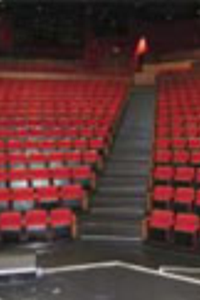Worker suffered fatal injuries after being struck by theatre seating
Date of incident: November 2011
Notice of incident number: 2011147280232
Employer: Gaming and entertainment firm
Incident summary
Six workers were replacing a malfunctioning seat-rotation motor for the seating in a theatre. (The motor rotates the seats 180 degrees from a storage position under the floor to an upright position for audience seating.) They had manually rotated a section of 12 seats before applying the motor's seat brake to hold the section upright. The workers then manually removed the motor. Since the brake was connected to the motor, this action disengaged the brake, causing the section of seats to rotate downward, striking three of the workers. One worker suffered serious injuries and later died in the hospital. A second worker suffered minor injuries.
Investigation conclusions
Cause
- Suspended seats not de-energized and locked out: Workers were doing maintenance on a motor, with a section of seats suspended and not blocked or tied off to prevent movement. When the seat-rotation motor was removed, the brake that was attached to it was also removed, and the seat section began to rotate downward under the force of gravity. A worker was struck and pushed through a 3-foot opening to a concrete floor 9½ feet below.
- Lack of specific lockout procedures: The employer's health and safety program contained no specific lockout procedures. Without such procedures in place for the seat-rotation equipment, the workers did not take steps to prevent the section of seats from moving while working under it.
- Inadequate planning and risk assessment: A maintenance team meeting was held about a week before the incident to discuss the motor replacement. At the meeting, the chief engineer and the electrician verbally planned the motor replacement to ensure that no errors would prevent the continued use of the seats. However, no risk assessment was conducted before the day of the incident. A risk assessment should have examined all aspects of the work, and considered what could cause injury. It should also have considered whether the hazards could be eliminated, and, if not, what measures should be put in place to control the hazards.
- Lack of training and experience for the task: The chief engineer and the electrician were responsible for planning the motor replacement, yet neither had previous experience with or training for this task. One of the firm's managers relied on the chief engineer to do the maintenance or to contract out the task. Although the chief engineer was well versed in operating the automated seating system, he had received no formal training from the employer in its maintenance. In addition, the employer had not trained the workers on the maintenance team to replace the motor safely.
- Lack of supervision: The chief engineer was in charge of the maintenance team to replace the seat-rotation motor. However, he did not assign any specific tasks to the workers. Workers were not warned of the hazards of working under the upright seats or of working near the floor opening.
- Lack of guardrails or floor covering: Workers were performing maintenance on a motor that was situated over an opening in the floor that was 3 feet wide and ran the full length of the theatre. Workers were not prevented from falling by either a covering over the opening or by guardrails.
- Safety directives not implemented: The employer and the supervisors of the maintenance team did not follow the employer's own health and safety program. New directives from the employer to supervisors required supervisor training, orientation to the department, a new binder on department safe work procedures, and team health-and-safety meetings. However, these were not implemented in the maintenance department. In addition, the employer failed to ensure that managers implemented these directives.

